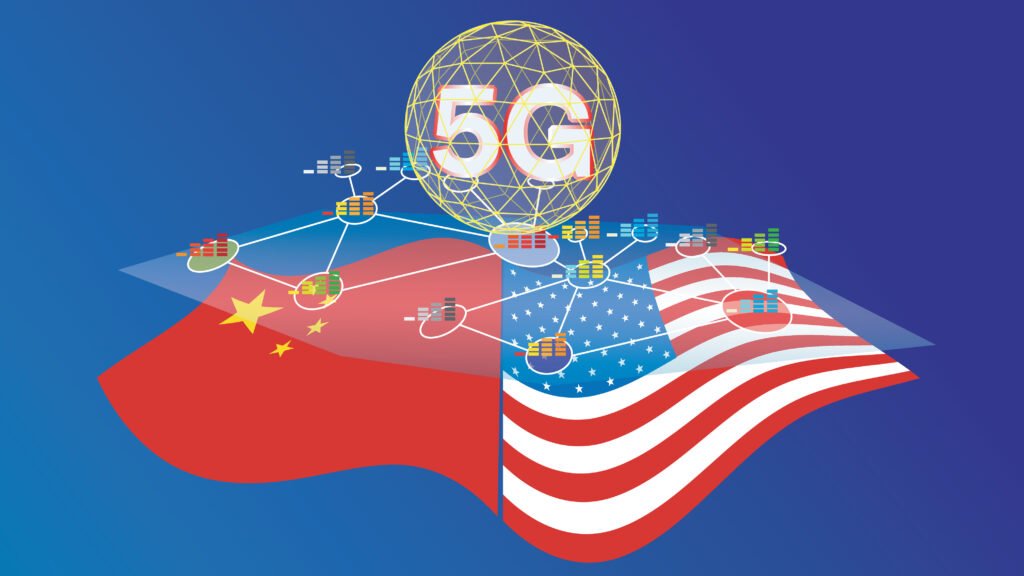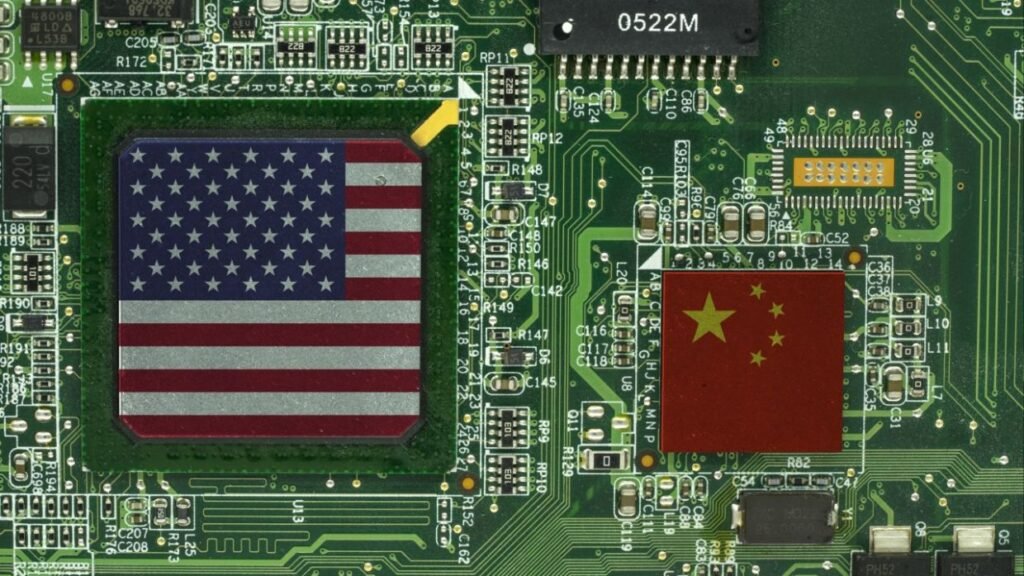Comparing the US and Chinese Technology Ecosystems

Over the last decade, China’s technology industry has grown at a breakneck pace. Once considered incapable of innovation, China’s contribution to technological advancement has become impossible to ignore as it continues its steady rise. Now home to such tech giants as Alibaba, Tencent, and Huawei, China is competing in the global market. But what does this technological success mean in the context of China’s internal and international politics, particularly its tense relationship with the United States? On September 7, while presiding over the 27th meeting of the Central Commission for Comprehensively Deepening Reform, Chinese President Xi Jinping said the country should mobilise resources for innovation of major scientific and technological advancements, and give full play to the role of the market.
A new report titled “Mid-Decade Challenges to National Competitiveness” released by a US-based think tank, compiled by taking the views of more than 225 experts including “government officials, technologists, academic leaders” and chaired by former Google CEO Eric Schmidt warns of China’s potential to win the technology race and in the process cripple the US economy and military.” The conclusions make for stark reading, suggesting that microelectronics, artificial intelligence, and 5G are “destiny-shaping technology” for the US between now and 2030.
Apart from becoming the world’s leading low-cost producer, China has challenged the USA in the most advanced technologies of the 21st century including Quantum information science, semiconductors, artificial intelligence, 5 and 6 G, green energy and biotechnology. In 2020 China produced more than 250 million computers, 25 million automobiles and 1.5 billion smartphones, displacing America as the world’s top high-tech manufacturer.

Quite a bit of the technology competition is at an early stage, involving emerging fields such as quantum computing and artificial intelligence, with the US still at an advantage, especially in sectors such as software and semiconductors. But In some areas like smartphones, drones and electric vehicles, China has already achieved number one status. In others, on current trajectories, it will overtake the United States by the end of this decade. For China, the key lies in engaging a skilled and lower-cost workforce, huge government subsidies, and a willingness to finance expensive manufacturing sectors that may yield lower profits.
The mastermind behind Google’s technological advancement and America’s most respected technology expert Eric Smidth once said that many Americans still have an outdated vision of China. In his assessment “unless the existing trends change somehow by the end of this decade USA will be competing with a country that will have the world’s largest economy, most advanced research and development infrastructure, extensive deployment of new technologies and state of the art knowledge base.”
In order to assess the progress so far made by the United States and China in each technology of the 21st century, the Belfer Centre for Science and International Affairs of Harvard Kennedy School has published a comprehensive research report. According to the research, Americans believe that U.S. leadership in advanced technologies is unassailable and China can never be more than a “near-peer competitor.” But the Belfer Centre report states that “China stands today as a full-spectrum peer competitor of the United States in commercial and national security applications of Artificial Intelligence. Beijing is not just trying to master AI—it is succeeding.” Artificial Intelligence (AI) being one of the most advanced technologies of the century will have the greatest impact on economics and security in the decades to come.
Another report by the National Security Commission on Artificial Intelligence, drawing similar conclusions, states that China could soon replace the U.S. as the world’s “AI superpower” and that could have serious military implications to consider. Out of every $10 invested in AI in 2018, five went to Chinese startups and four to American companies. In the AI research field, China overtook the United States in 2021 for AI citations with a 35% increase from 2019. In AI’s cutting-edge field of deep learning, China has six times more patent publications than the US.
Indeed China has already overtaken the United States to become the world’s number one undisputed in many fields of artificial intelligence in speech technology. Chinese firms are beating American firms in every language, even in English. China’s iFlytek has become the world’s top voice recognition platform with 700 million users, almost twice the number of people who speak to Apple’s Siri. In facial recognition, there is no competition anymore. The United States has essentially accepted the race because of concerns over individual privacy regarding how this technology could be deployed. On the other hand, Chinese technology giants ‘SenseTime’ and ‘Megvii’ have deployed cutting-edge applications like instantaneous facial recognition which can identify a single face in a few seconds amongst the Chinese population of 1.4 billion.
Financial markets also reflect the Chinese rising artificial intelligence. A few years back only two of the world’s 20 most valued internet companies were Chinese. Today 7 giants of the artificial intelligence age including Google, Amazon, Facebook, Microsoft, Baidu, Alibaba and Tencent are split on either side of the Pacific. In financial technology, the Chinese mobile payment service ‘WeChat’ serves 900 million Chinese users compared to only 44 million users of Apple’s ‘Pay’ in the United States. As of today, 90% of the Chinese urban population use mobile payments as their primary payment method. In the year 2020, $42 trillion was spent by Chinese people through mobile payments whereas two-thirds of Americans still rely on credit cards. Chinese spend $150 through mobile platforms for every single dollar spent by Americans.
Similar trends are being observed in the 5G spectrum. With a tenfold increase in speed, five-fold in reliability and tenfold in device connections 5G promises to enable next-generation applications no one can even imagine today, and presently China is the single largest 5G market in the world having 87% of the world’s total 5G connections. Despite having advantages in governing standards and next-generation chip designs, America’s 5G infrastructure development is years behind Chinese development in this field. By 2020 China had 150 million 5G users as compared to America’s 6 million only. China has 700,000 5G base stations whereas America has only 50,000. Similarly, China has 460 megahertz of licenced mid-band spectrum compared to America’s 70 megahertz MHz. The average speed of Chinese 5G is 300 Mbps compared to America’s 60 MBPS. While former American National champions Lucent and Motorola crashed from 25% in 2000 to 0 % today, China’s National technology giant Huawei has grown from 0% market share in telecommunications infrastructure to becoming the world’s leading supplier of 5G equipment with a 28% global market share. All key indicators and undoubtedly support that China will dominate the 5G future. It is already pioneering next-generation 5G applications including smart factory systems, digital twins for industrial applications and the world’s first 5G enabling remote surgery.



All three important subfields within Quantum Information Science (QIS) including Quantum computing Quantum communication and Quantum sensing were historically led by the US but now China is quickly catching up. Pioneered just three decades ago, QIS is a field with potential for revolutionary advancements in science and technology involving complex computations, extremely fast communication and precision measurement. Global powers have only recently recognised that national security threats, due to advances in Quantum computing, once considered hypothetical, are becoming possible. Indeed, threats like the ability to crack advanced encryptions to Steal state secrets, the creation of more secure communication networks and high precision sensors with no dependence on space-based positioning systems may not be as far off as once thought. In 2014 the United States and China were tied in the number of quantum-related research patterns and projects. In 2016 China launched a mega project aiming to make breakthroughs in QIS by 2030, and just 2 years later in 2018 China passed the US by filing 52% of global Quantum patents, twice the number filed by the US.
Google’s Artificial Intelligence division created 53 qubits superconducting Quantum processor ‘Sycamore’ in 2019. One year later in December 2020, China reached the same milestone. In the same month, a photonic Quantum computer was developed by the University of Science and Technology of China which reached Quantum supremacy 10 billion times faster than Google for certain calculations in physics. And only 6 months later a Chinese team created the world’s most powerful superconducting quantum computer Zuchongzhi which solved a problem hundred times more challenging than the one solved by Google’s sycamore.
China’s progress in Quantum communication is also unprecedented. In 2016 China launched the world’s first Quantum communication-enabled satellite called MICIUS. Shortly afterwards Chinese scientists created a record-breaking Quantum communication link between satellites and an Earth station having a distance of 745 miles in between. Experts believe that Chinese government and military communications will go ‘black’ in the next 3 years which means that the United States would no longer be able to intercept any Chinese military or diplomatic communication.
Quantum sensing is a relatively mature field with emerging real-world capabilities, especially in direct military applications including the capability to nullify stealth technology and radar jamming. Sure again the Chinese are quickly paving the way to become the world’s number one in 2019 China ranked third in citations of quantum sensing after the United States and Europe. However, in publications from just the last 5 years, China is ranked first in citations per paper and total publications in this field.
Semiconductors are a core element for modern technology including AI automobiles, computers, weapons, hi-tech machines are essential general purpose drivers in the US-China rivalry. The United States of America retains its semiconductor dominance that it has had from the last 50 years but this position has been gradually eroded by domestic underinvestment and rising overseas competition. Although the United States still leads in chip design and manufacturing inputs its share of semiconductor fabrication has reduced from 37% in 1990 to 12% today.

Meanwhile, China’s decades-long efforts to become a major semiconductor producer have yielded significant results in recent years. The Taiwan Semiconductor Manufacturing Company (TSMC) founder Morris Chang has assessed that although Beijing is not yet a competitor to US and its allies, China has quickly lessened the gap in semiconductor production and design to just 1 to 2 generations behind major global players. China’s National champion in semiconductor fabrication ‘The Semiconductor Manufacturing International Corporation’ (SMIC) has consecutively been ranked among the top 5 foundries over the past decade and its breakthrough N+1 7nanometer process in 2020 means that its advanced fabrication and capabilities now rival America’s Intel. While China is still dependent on semiconductor imports to meet 85% of domestic demand, these recent achievements disprove the long conventional wisdom that China’s semiconductor industry cannot catch up.
The expansion of green energy in the global energy mix promises to be as disruptive in the current era as oil was in the 20th century. Financial markets already indicate that these trends, for example, clean energy investments, reached 500 dollars billion dollars for the first time last year and will further grow to a total 16 trillion by the end of the next decade.
While the US has been the primary inventor of new green technologies over the past two decades. today China has taken the lead in manufacturing and deploying those technologies allowing it to dominate multiple links of the green energy supply chain. China is now the dominant manufacturer of equipment for generating renewable energy. In 2000 China was producing one percent of global solar panels, today China occupies 70% of the market share. On the other hand, America’s global share fell from 30% in 2000 to less than 1% today. China controls 40% of the global market of wind turbines as compared to only a 12% share of the US. China also has a monopoly over several of the key inputs and raw materials necessary for solar panels, batteries and other green technology including chemical lithium. Where China lacks resources domestically it secures them overseas . Chinese companies have acquired 8 of the 14 largest Cobalt mines in the democratic republic of the Congo, the largest producer of Cobalt. China has 30% of global output and a 51% stake in the world’s largest lithium reserves. Meanwhile, the US imports 40% of its lithium, 80% of its cobalt 95% of rare Earth elements and 100% of its graphite.It could take 20 to 30 years just for the US to catch up with China in terms of sourcing raw materials for green energy in energy storage China controls 80% of battery raw material refining, 77% of cell capacity, and 60% of battery component manufacturing.
In sum, although the US has led the past half-century of technology innovation and still retains dominance in several technological fields China has emerged as a serious peer competitor in the foundational technologies of the 21st century and is likely to be a leader in these by the end of this decade. The applications of these technologies will be transformative in areas from intelligence to economic growth, military power and governance.


















